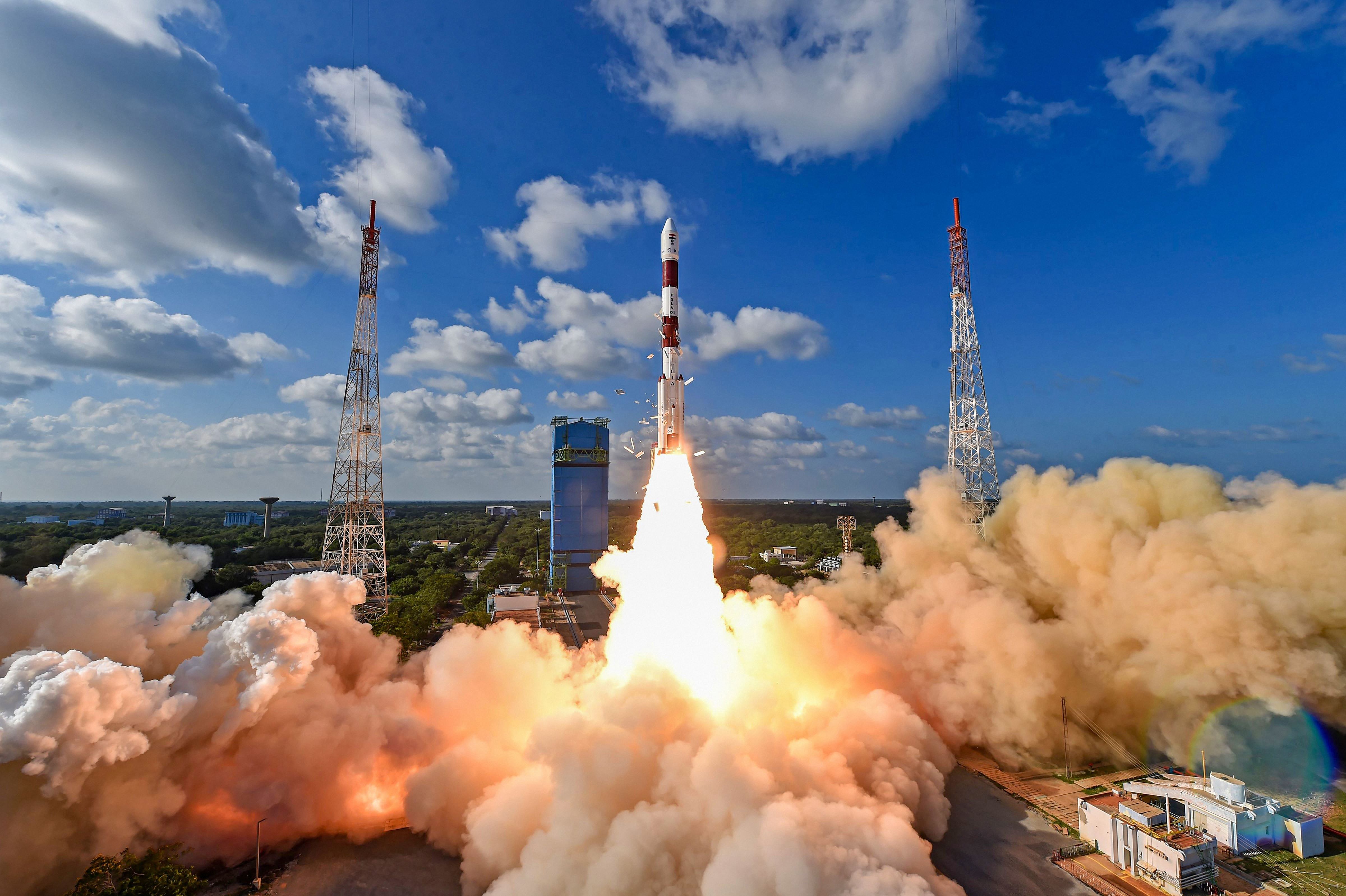
The Indian Space Research Organisation ended the year, with successful spacecraft launches in November and December and getting over the Chandrayaan-2 mission’s moon landing failure. The PSLVs, on which these spacecraft were launched, have done a commendable job over several years, providing reliable launches to satellites from around the world, and have helped ISRO compete with the likes of SpaceX.
On November 11, SpaceX launched 60 Starlink satellites, part of an ambitious plan to launch 42,000 satellites into low-earth orbits to provide high-speed internet to the world, on its Falcon 9 launcher. While ISRO is doing an excellent job, the participation of private space companies from India is still limited. Can we expect private Indian space companies to provide launches, build satellite constellations and provide human space transportation in the future?
Over the past five years, we have seen many NewSpace — companies working independently of government space programs and not as suppliers or contractors – start-ups come up across the space value chain. Skyroot Aerospace is developing a small satellite launch vehicle; Astrome Technologies aims to provide satellite constellation-based internet connectivity; Pixxel is building a nanosatellite constellation for earth imagery, and Bellatrix Aerospace is researching new-age propulsion systems. Currently, there are about 25 NewSpace start-ups in India. The question is, how do we enable these companies to mature into global players? How do we build our very own SpaceX?
At the outset, we must understand that space is an inherently difficult sector to do business in because of the long gestation periods and significant capital requirements. However, today, with space being an enabler to various applications like Direct-to-Home broadcasting, real-time navigation, telecommunications, services based on earth imaging and so forth, the government space agency, by itself, does not have the capacity (in terms of capital, skilled labour, equipment) to develop and exploit all these benefits, making a strong case for unlocking the potential of private capital and skills.
Private space activity is deeply linked to India’s prosperity. Currently, ISRO is a research centre, a service delivery organisation, and a regulator. It is a player in the market and is also the umpire granting licences to private players. This results in a conflict of interest and is not an appropriate institutional design. An enabling civil space policy that can provide a clear institutional framework and an environment where private players are supported and encouraged is essential. India’s space policy must incorporate the following key ideas to provide a clear and transparent policy framework for private participation.
First, we need to establish an independent space regulatory authority that is tasked with prescribing rules for carrying out space activities from Indian land. This authority, let’s call it Space Regulatory Authority of India (SRAI), should carry out licensing in a fair and transparent manner and ensure that the authorised players comply with rules and regulations. An important consideration here is that distinct regulations should be set for players involved in different parts of the space value chain. A company that provides launch services, a manufacturer of communications satellite and an organisation that creates value-added products from data collected from earth-imaging satellites have different risk profiles. A ‘one size fits all’ regulatory regime, as the Draft Space Activities Bill 2017 prescribes, will not work.
Second, the policy needs to establish a Space Disputes Settlement Appellate Tribunal (SDSAT) to settle appeals against SRAI and to adjudicate disputes between licensors, licensees, consumers or service providers in the space sector. Since space is a highly technical field, a specialised body comprising of people with sound knowledge and deep experience in the sector would not only help resolve complex issues but also provide faster resolution of disputes. Any decision of the SRAI should be challengeable in the SDSAT. Also, any party not satisfied with SDSAT’s ruling should be able to find recourse to higher courts.
Third, ISRO must hive off all its commercial activities into a Space Corporation of India (SCI). This would include manufacturing, maintenance and operation of launch vehicles and satellite systems (communications, earth-imaging and navigation), used exclusively for commercial purposes and built on legacy technologies of the ISRO. This organisation would compete in the domestic and international marketplace for launches of private and public spacecraft. ISRO, as the name suggests, would focus on research and development of frontier space technologies.
Although, there are many other things that a space policy needs to address, like harmonising international law to manage obligations emanating from the 1967 Outer Space Treaty and other treaties, providing intellectual property rights to inventors and creators, and promoting investments, education and R&D in space, setting up an institutional framework with well-defined roles and responsibilities is vital. If the governance of space activities is not reformed, we would not only kill the nascent start-ups in their infancy but also hinder India’s shot at a prosperous future.
(The writer is a Research Analyst at the Takshashila Institution, Bengaluru)